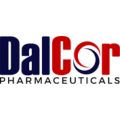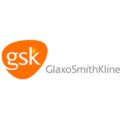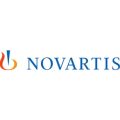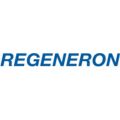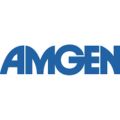
Overview
Biochemistry is the study of the chemical processes and substances that occur within living organisms. It delves into the molecular interactions and reactions that underlie biological functions, such as metabolism, cell signaling, and genetic information flow. Biochemists analyze the structure, function, and regulation of biomolecules like proteins, nucleic acids, lipids, and carbohydrates. By uncovering the intricacies of these molecular mechanisms, biochemists contribute to our understanding of health, disease, and the fundamental principles of life. Biotechnology involves the application of biological knowledge and techniques to create innovative products, processes, and solutions that benefit various sectors, including medicine, agriculture, and industry. Biotechnologists harness the tools of molecular biology, genetics, and other scientific disciplines to manipulate and engineer living organisms or their components for specific purposes. This can include producing pharmaceuticals through genetic engineering, developing genetically modified crops for improved yields, creating biofuels, and designing diagnostic tools for medical diagnostics.
Depending on specific features and functions, GAO Tek’s polarimeters are sometimes referred to as Polarimetry instrument, Optically active substance analyzer, Optical rotation measurement device, Polarization angle detector, Optical rotatory dispersion analyzer, Polarization angle measurement apparatus, Polarization rotation meter, Polarization angle sensor, Polarimetric spectrometer, and Polarizing light analyzer.
GAO Tek’s polarimeters have the following applications in biochemistry and biotechnology sector:
- Enzyme Studies: Polarimeters are used to study the kinetics and mechanisms of enzyme-catalyzed reactions. The change in optical rotation can provide information about the interaction between enzymes and substrates.
- Protein Conformation: Protein folding and conformational changes can be monitored using polarimeters. Optical rotation measurements can reveal structural alterations and help in understanding protein stability.
- Chiral Molecules: Polarimeters are essential for analyzing chiral molecules, such as amino acids and sugars, which are crucial in biological systems. They help determine the enantiomeric purity and concentration of these molecules.
- Drug Analysis: In pharmaceutical research, polarimetry is used to analyze chiral drug compounds. It helps in quality control, determining purity, and studying drug interactions with other molecules.
- Glycoprotein Characterization: Polarimetry can be used to analyze glycoproteins and carbohydrates, aiding in the understanding of their structures and functions.
- Bioprocess Monitoring: Polarimeters are used to monitor and control bioprocesses such as fermentation and cell culture. Changes in optical rotation can indicate changes in product concentration or the presence of impurities.
- Chiral Drug Development: In drug development, polarimeters assist in analyzing and producing chiral drugs, which often exhibit different pharmacological properties based on their enantiomeric form.
- Biomolecular Interactions: Polarimetry can be applied to study biomolecular interactions, such as protein-ligand binding or protein-protein interactions, providing insights into binding affinities and kinetics.
- Pharmaceutical Formulation: Polarimetry helps in formulating pharmaceuticals containing chiral compounds, ensuring consistent product quality and stability.
- Biopolymer Characterization: Polarimeters aid in characterizing biopolymers like DNA, RNA, and polysaccharides, providing information about their structures and interactions.
- Biochemical Assays: Polarimetry is utilized in various biochemical assays, including enzymatic assays, to monitor reaction progress and analyze reaction outcomes.
- Bioproduction Optimization: Polarimetry can be used to optimize the production of optically active compounds, such as amino acids, organic acids, and other bio-based products.
Complying with Industry Standards
GAO Tek’s polarimeters comply or help our customers comply with the industry standards such as
- ISO 17025:
- Pharmacopoeial Standards
- ASTM E578
- ICH Guidelines
- AOAC Internationa
- GLP and GMP Guidelines
- NIST
Complying with Government Regulations
GAO Tek’s polarimeters comply or help our customers comply with the U.S. government regulations such as
- Good Laboratory Practice (GLP) Regulations (21 CFR Part 58).
- Current Good Manufacturing Practice (cGMP) Regulations (21 CFR Part 210 and 211).
- Analytical Procedures and Methods Validation for Drugs and Biologics (FDA Guidance).
- ICH Q2(R1) Validation of Analytical Procedures.
- USP General Chapters.
- FDA Biotechnology Regulations (21 CFR Part 600-680).
GAO Tek’s polarimeters comply or help our clients comply with the Canadian regulations such as
- Good Laboratory Practice (GLP) Regulations.
- Good Manufacturing Practices (GMP) Regulations.
- Canadian Pharmacopoeia (Pharmacopée Canadienne).
- Guidance Documents on Quality (Health Canada).
- Biologics and Genetic Therapies Directorate (BGTD) Regulations.
- Natural Health Products Regulations.
Case Studies of polarimeters in Biochemistry and Biotechnology Sector
Polarimeters are sometimes called as Polarization Analyzers, Optical Rotation Instruments, Polarization Angle Detectors, Optical Polarization Meters, Chiral Analysis Devices, Polarization Angle Measuring Instruments, Optical Activity Analyzers, Rotatory Dispersion Instruments, Optical Rotation Measurement Devices, Chiroptical Analyzers, Polarization Angle Sensors, Chirality Detection Devices, Optical Chirality Instruments, Polarizing Light Analyzers, Polarization Sensing Devices.
Here are some practical examples of using polarimeters in biochemistry and biotechnology sector:
A pharmaceutical company in the Northeast uses polarimeters to ensure the quality and purity of chiral drug compounds. The polarimeter is employed to analyze the optical rotation of enantiomers, helping the company meet regulatory standards for drug manufacturing.
A research institute in the Northeast employs polarimeters to investigate the kinetics of an enzyme-catalyzed reaction. By measuring the change in optical rotation over time, researchers gain insights into the reaction mechanism and enzyme activity.
A biotechnology startup in the Northeast uses polarimeters to characterize the optical activity of various carbohydrate structures. This information is crucial for understanding the functions of glycoproteins and polysaccharides in therapeutic applications.
A biomanufacturing facility in the Northeast utilizes polarimeters to monitor the optical rotation of cell culture media during the production of biologics. Changes in optical rotation provide insights into nutrient consumption and metabolite production.
A chemical company in the Northeast employs polarimeters to optimize the synthesis of chiral compounds used in flavors and fragrances. Polarimetry helps determine the enantiomeric excess and purity of the final product.
A biopharmaceutical company in the Northeast utilizes polarimeters to study the binding interactions between a protein and its ligands. By measuring changes in optical rotation upon binding, researchers gain insights into binding affinity and stoichiometry.
A food manufacturer in the Northeast employs polarimeters to ensure the authenticity and quality of natural sweeteners. Polarimetry helps detect adulteration and verify the optical purity of the sweeteners.
An environmental laboratory in the Northeast uses polarimeters to analyze chiral pollutants in water samples. This helps in understanding the sources and environmental impact of these contaminants.
A herbal medicine company in the Northeast uses polarimeters as part of their quality control process to assess the optical purity of chiral compounds present in herbal extracts.
A biotech research center in the Northeast employs polarimeters to analyze the optical activity of protein aggregates, which is crucial for understanding protein stability and formulation development.
A bioenergy company in the Midwest employs polarimeters to monitor the optical rotation of fermentation cultures producing biofuels. The measurements help optimize nutrient levels and fermentation conditions for maximum biofuel yield.
A pharmaceutical research institute in the Midwest uses polarimeters to analyze chiral drug compounds, ensuring the quality and purity of enantiomers during drug development.
A biotech startup in the Midwest employs polarimeters to study the effects of enzyme mutations on optical rotation. This aids in the engineering of enzymes for improved catalytic efficiency.
A biomanufacturing facility in the Midwest uses polarimeters to monitor the optical activity of protein solutions, helping to detect protein aggregation and optimize formulation conditions.
An agribusiness laboratory in the Midwest employs polarimeters to analyze the optical purity of chiral compounds in agricultural products, such as pesticides and fertilizers.
A food processing plant in the Midwest utilizes polarimeters to ensure the quality and authenticity of natural flavor compounds in food products.
A herbal medicine manufacturer in the Midwest employs polarimeters to assess the optical purity of chiral compounds in herbal extracts used for traditional medicines.
A biopharmaceutical company in the Midwest uses polarimeters to study the binding interactions between proteins and ligands, aiding in drug discovery and development.
An environmental research center in the Midwest employs polarimeters to analyze chiral pollutants in water samples, contributing to the assessment of water quality and pollution sources.
A polymer research institute in the Midwest utilizes polarimeters to analyze the optical activity of bio-based polymers, providing insights into their structure and properties.
A pharmaceutical laboratory in the South employs polarimeters to analyze the optical purity of chiral drug compounds, ensuring compliance with quality standards and regulatory requirements.
A biotech research center in the South uses polarimeters to study protein-ligand interactions, providing valuable insights into drug binding and affinity.
A food and beverage manufacturer in the South utilizes polarimeters to monitor the optical purity of natural sweeteners and flavors, ensuring product quality and authenticity.
A biomanufacturing facility in the South employs polarimeters to monitor the optical rotation of fermentation cultures, aiding in the production of biologics and other bio-based products.
An agricultural research institute in the South uses polarimeters to analyze the optical activity of chiral compounds in agrochemicals, contributing to the development of safer and more effective pesticides.
A chemical company in the South utilizes polarimeters to optimize the synthesis of chiral compounds used in various industrial applications, including pharmaceuticals and fine chemicals.
A biotechnology startup in the South employs polarimeters to characterize the optical activity of engineered enzymes, facilitating the development of novel biocatalysts.
A herbal medicine producer in the South uses polarimeters to assess the optical purity of chiral compounds in herbal extracts, ensuring product quality and consistency.
A research university in the South employs polarimeters to study protein folding and conformational changes, advancing our understanding of protein stability and function.
A materials research center in the South uses polarimeters to analyze the optical activity of biodegradable polymers, contributing to the development of sustainable materials.
A biopharmaceutical company on the West Coast employs polarimeters to analyze the optical purity of chiral drug compounds, ensuring safety and efficacy in drug development.
A biotech research institute on the West Coast uses polarimeters to study protein-ligand interactions, aiding in the design of novel therapeutic agents.
A renewable energy company on the West Coast utilizes polarimeters to monitor the optical rotation of biofuel fermentation cultures, optimizing biofuel production processes.
A herbal medicine manufacturer on the West Coast employs polarimeters to assess the optical purity of chiral compounds in herbal extracts, ensuring product quality and consistency.
A biomaterials research center on the West Coast uses polarimeters to study the optical activity of biopolymers, contributing to the development of innovative materials.
An agricultural research facility on the West Coast employs polarimeters to analyze the optical activity of chiral pesticides, aiding in the assessment of pesticide safety and environmental impact.
A beverage company on the West Coast utilizes polarimeters to monitor the optical purity of natural flavors and sweeteners, ensuring product quality and consumer safety.
A biotech startup on the West Coast employs polarimeters to study the effects of enzyme mutations on optical rotation, advancing enzyme engineering efforts.
A fine chemicals manufacturer on the West Coast uses polarimeters to optimize the synthesis of chiral compounds used in various industrial applications.
A research university on the West Coast employs polarimeters to develop biochemical assays for studying enzyme kinetics and molecular interactions.
A pharmaceutical company in Canada employs polarimeters to ensure the optical purity and quality of chiral drug compounds during manufacturing.
A herbal medicine producer in Canada uses polarimeters to assess the optical purity of chiral compounds in herbal extracts, ensuring product consistency and efficacy.
A biotech research institute in Canada utilizes polarimeters to study protein-ligand interactions, contributing to drug discovery and development efforts.
A biochemical research center in Canada employs polarimeters to investigate the kinetics of enzyme-catalyzed reactions, providing insights into enzymatic mechanisms.
A biomanufacturing facility in Canada uses polarimeters to monitor the optical rotation of fermentation cultures, optimizing the production of biologics and bio-based products.
An agricultural research institute in Canada employs polarimeters to analyze the optical activity of chiral agrochemicals, contributing to sustainable agricultural practices.
A food and beverage manufacturer in Canada utilizes polarimeters to ensure the quality and authenticity of natural flavor compounds.
A polymer research center in Canada uses polarimeters to analyze the optical activity of bio-based polymers, contributing to the development of sustainable materials.
A pharmaceutical research company in Canada employs polarimeters to analyze the optical purity of chiral drug candidates, ensuring their safety and efficacy.
A biopharmaceutical company in Canada uses polarimeters to study the binding interactions between proteins and ligands, aiding in drug design and optimization.
GAO RFID Inc. gaorfid a sister company of GAO Tek Inc., is ranked as a top 10 RFID supplier in the world. Its RFID, BLE, and IoT products have also been widely used in biochemistry and biotechnology sector.
Use of polarimeters with Leading Software and Cloud Services in Biochemistry and Biotechnology Sector
- Horizon Software Suite
- Jasco Spectra Manager Suite.
- Bellingham + Stanley Polarimeter Software.
- PerkinElmer UV/Vis and Polarimetry Software.
- OptiPol Software.
- CRAIC Polarization Microscope Software.
- LabSolutions Software.
- Delta Software.
- VISTACHROM Polarimeter Software.
- Origin
- MATLAB
- Python
- Microsoft Excel.
- LabVIEW
- KnowItAll® Software.
- SOLEIL Polarimetry Software.
- Chirascan Software.
- CDNN Circular Dichroism Analysis Software.
- DataPlotly
- ImageJ
- Biostatistics Software (e.g., R, SPSS, SAS.
- GraphPad Prism.
- Polaristool
- Polarimetry Tool in Pymatgen.
- Amazon Web Services (AWS).
- Microsoft Azure.
- Google Cloud Platform (GCP).
- IBM Cloud.
- Drop Box
- Box
- One Drive
- Google Drive.
- Zoho Docs.
- ResearchGate
- LabArchives
- Figshare
- Google Cloud Datapro.
- Microsoft Azure Databricks.
- Tableau Online.
- Google Colab.
- IBM Watson Studio.
- Plotly Cloud:
- MathWorks MATLAB Online.
- CodaLab
- RStudio Cloud.
- Microsoft Power BI.
- Databricks Community Edition.
- Wolfram Alpha Cloud.
- KnowItAll® Software by Bio-Rad.
- Polarimetry Analysis in ChemDraw Cloud.
- KnowItAll® Software by Bio-Rad.
GAO Tek’s Polarimeters and their applications in other industries are listed on this page. life-sciences. Other related products can be found at this category page. polarimeters
GAO Has Many Customers in Biochemistry and Biotechnology Sector
The products from both GAO Tek Inc. and GAO RFID Inc. have been widely used in Biochemistry and Biotechnology by many customers, including some leading companies. Here is more information on applications of GAO RFID Inc.’s products in biochemistry and biotechnology sector.
Here are some of the leading companies in biochemistry and biotechnology sector:
- Pfizer Inc.
- Merck & Co.
- Regeneron Pharmaceuticals.
- Biogen
- Novartis Institutes for BioMedical Research (NIBR).
- Sanofi
- Eli Lilly and Company.
- Abbott Laboratories.
- Amgen
- Johns Hopkins University School of Medicine.
- Mayo Clinic.
- University of Chicago Pritzker School of Medicine.
- Johnson & Johnson.
- Baylor College of Medicine.
- MD Anderson Cancer Center.
- GlaxoSmithKline (GSK).
- Duke University School of Medicine.
- Emory University School of Medicine.
- STEMCELL Technologies.
- Apotex
- Exactis Innovation.
- DalCor Pharmaceuticals.
- Triumvira Immunologics.
- Zymeworks

